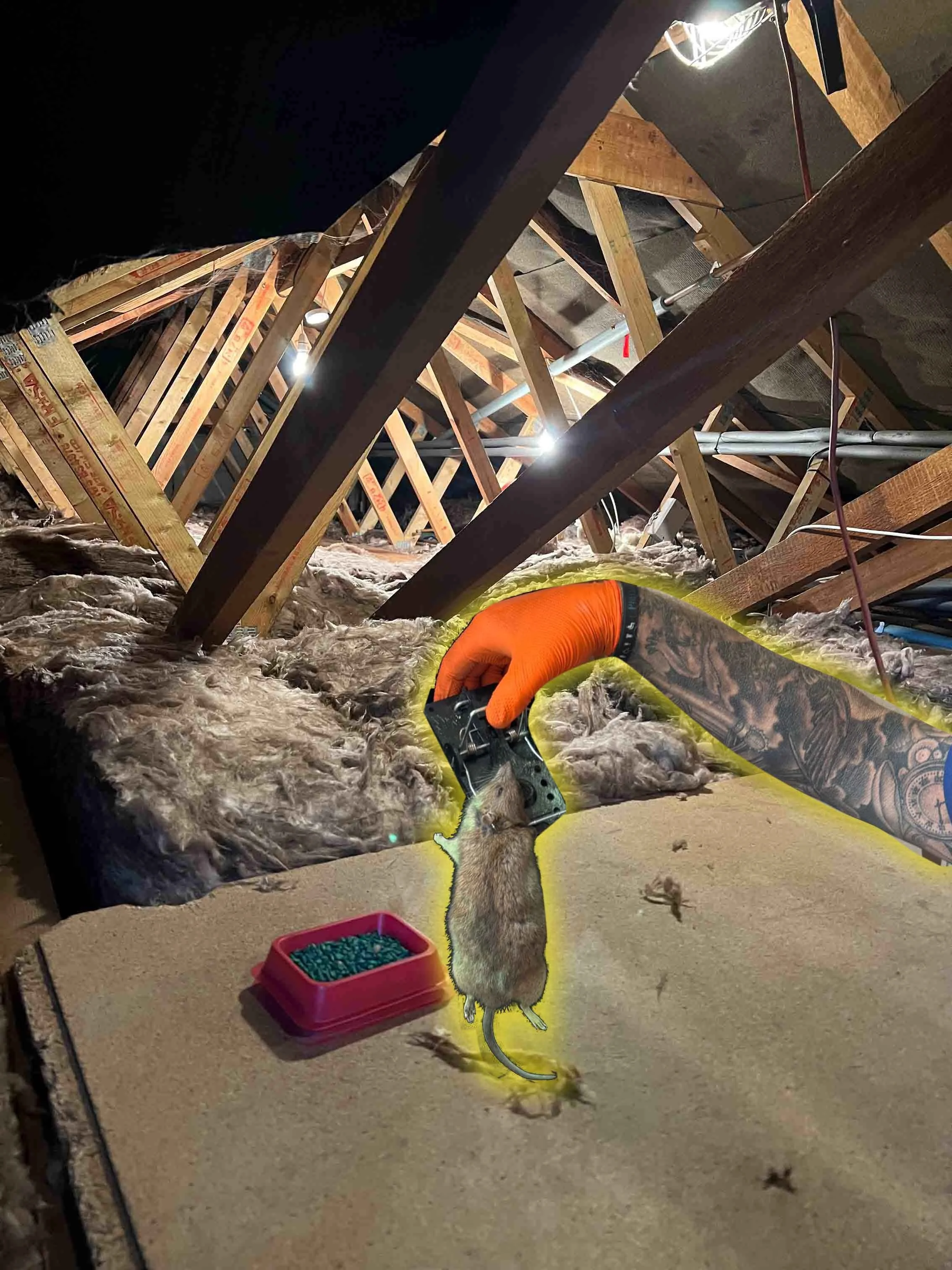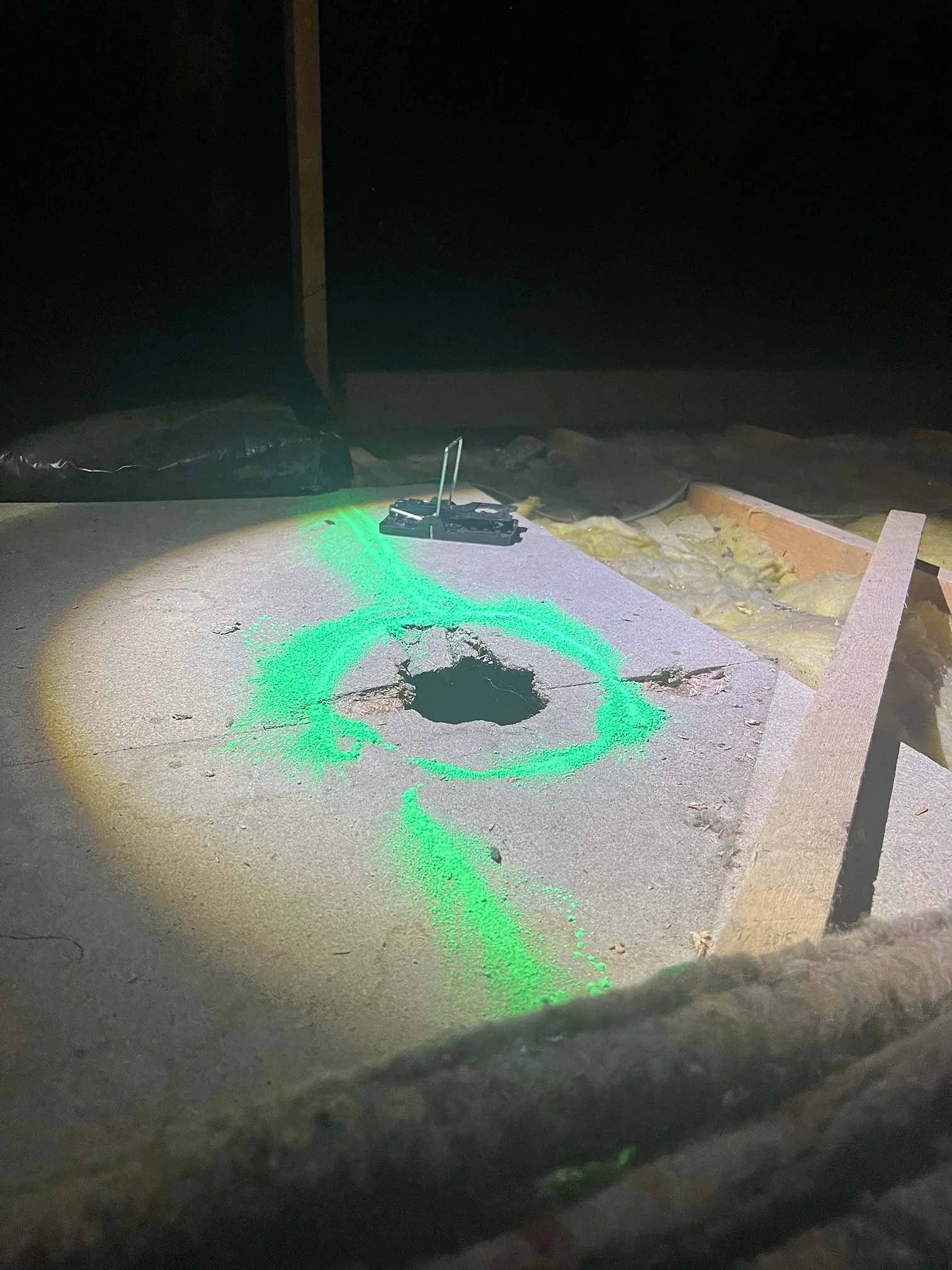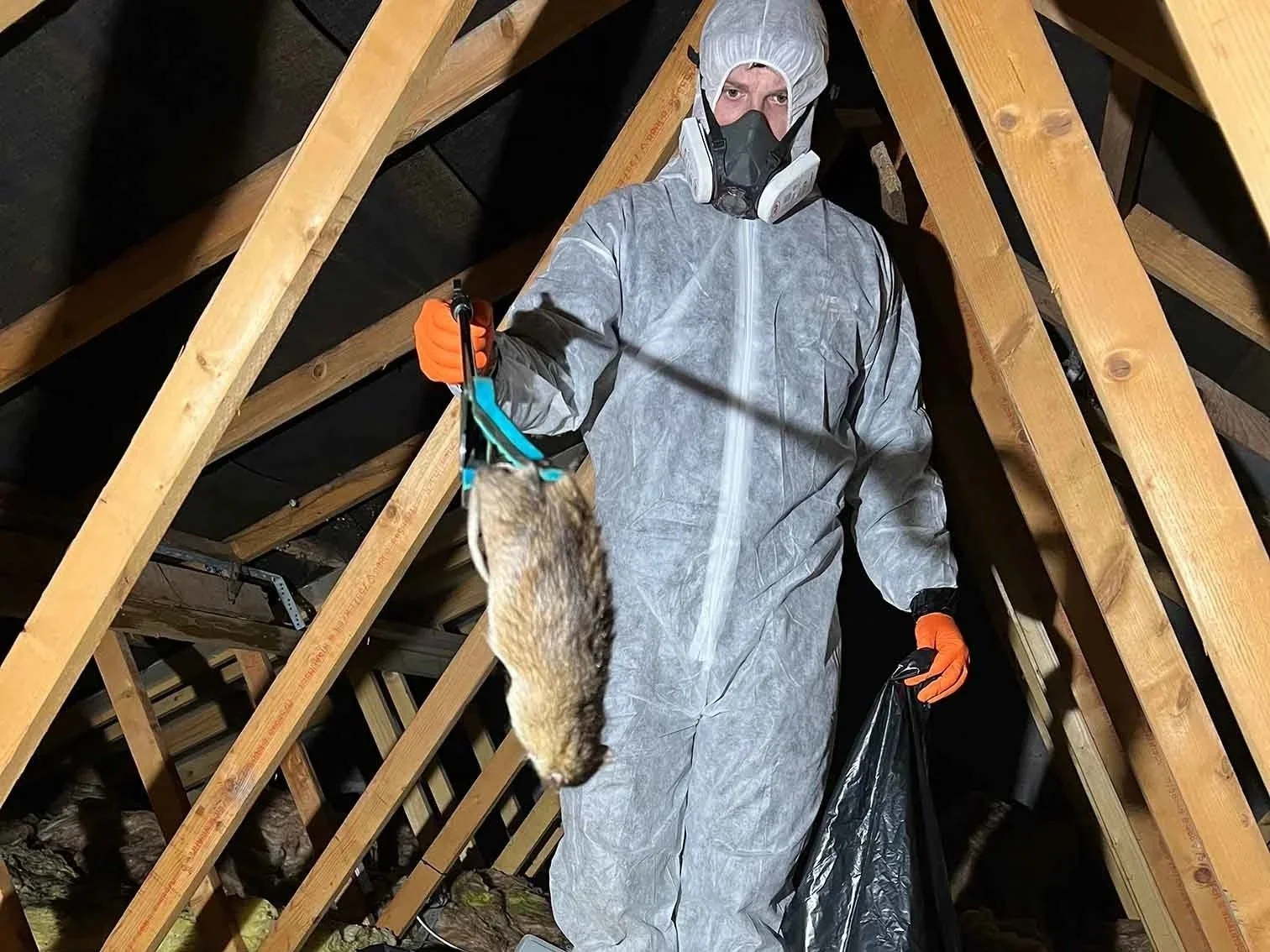How to Get Rid of Rats in Your Loft: Simple Steps That Work
Hearing scratching above your head at night can be unnerving. If you keep hearing noise in the loft at night and have found a few odd droppings or chewed cables, you may be dealing with rats in the loft rather than just old pipes or the wind. Getting on top of rats in loft spaces quickly is important, as they can damage wiring, contaminate insulation and spread disease.
In this guide we will walk through the main signs of rats in the loft, how to tell if it could be mice or squirrels instead, how rats get into lofts, and what to do next if you live in Essex and need proper rodent control.
Signs of rats in the loft
You may have rats in the loft or attic if you notice some of these common clues:
Scratching and scurrying at night - Rats are most active after dark. People often describe heavy scampering, scratching and thudding sounds across the ceiling, usually in the small hours. It tends to sound heavier and more purposeful than mice, which are lighter and more scratchy.
Droppings in loft spaces or near loft hatches - Rat droppings are usually larger than grains of rice, dark and sausage shaped. They may appear in clusters near insulation, along joists or by regular run routes. If you find droppings near the loft hatch or along pipes, this is a strong sign of activity.
Gnaw marks and damage - Rats have to gnaw to keep their teeth short. In a loft they often chew plastic pipes, cables, stored boxes and joists. Look for fresh gnaw marks, shredded insulation and bits of packaging.
Smell and staining - A strong, musky smell in one part of the loft can mean a rats nest or toilet area. Over time you may see staining on insulation or wood where they have urinated regularly.
Rub marks and runs - Rats use the same routes over and over. This can leave greasy smears on beams and cables, or clear runs through insulation where their bodies have worn a path.
If you recognise several of these signs of rats in the loft, it is worth taking action sooner rather than later.
Is it rats, mice or squirrels in the loft?
Many people search for “rats in loft” when it could be mice or squirrels instead. A quick comparison helps:
Rats in loft
Heavier thuds and scurrying at night
Larger droppings, about 1 to 2 cm long
Often close to drains, soil pipes and lower roof areas
Stronger smell in established infestations
Mice in loft
Lighter, faster scratching, often near edges of the room
Tiny droppings like dark grains of rice
More likely in wall cavities and under floors as well as the loft
Squirrels in loft
Noises are often louder in early morning and late afternoon
Lots of banging and rolling sounds as they move nuts around
Entry holes near roof edges, soffits or fascia boards
More chewing on woodwork and plastic around entry points
As pest control technicians, we can identify the culprit from photos of droppings, damage and entry points. Correct ID matters because rat control in the loft is handled differently to grey squirrel removal.
How do rats get into the loft?
Many people are surprised when they first discover rats in an attic or roof space and ask “how do rats get in the loft at all?” Common routes include:
Drains and soil pipes - Rats often travel through sewers, then use damaged pipes or redundant branches to emerge near your foundations. From there they can climb external walls, cables and pipework up to the loft.
Gaps in roof tiles and soffits - Any small gap around roof tiles, soffits or vents can be an invitation. Rats are good climbers and can squeeze through surprisingly small holes if their heads fit.
Climbing plants and nearby trees - Ivy, trellis or overhanging branches can act as a bridge to the roof. Once there, rats in roof spaces can move between adjoining properties.
Cavities and voids - From a small entry point at ground level, rats may travel inside wall cavities and emerge in loft spaces, airing cupboards or above bathrooms.
How to get rid of rats in the loft safely
Once you are fairly sure you have rats in the loft, it can be tempting to throw down traps and poison. A better plan is to follow a structured approach.
1. Confirm the problem - Check for fresh droppings, gnaw marks and smear marks. Try to take clear photos. If possible, note what time you hear activity, and which rooms it seems above.
2. Tidy and protect food sources - Even though rats are in the loft, food downstairs still attracts them. Keep food in sealed containers, clean up crumbs quickly and secure pet food at night.
3. Avoid random poison use - DIY poison in a loft can lead to dead rats in walls and unreachable voids, which may cause bad smells and flies. It can also pose risks to pets and non target wildlife if used incorrectly.
4. Call a professional pest controller - A trained pest control technician will:
Carry out a full inspection of the loft, roof, garden and drains
Identify how rats are getting in and what type of rodent is present
Put together a safe rat control plan using the right baits or traps
Arrange follow up visits until rats in the loft and surrounding areas are cleared
Advise on proofing and simple building repairs to prevent future infestations
The most effective way to get rid of rats in loft spaces is a mix of treatment and proofing rather than a quick one off visit.
Rats in loft in Essex? When to call Beeyond Pest Control
If you live in Essex and suspect rats in the loft, you do not have to deal with it alone.
Beeyond Pest Control is a local family pest control company, run by me, Mark, and my son Mitch. As experienced pest controllers in Essex, we deal with rats in lofts, walls and outbuildings across Essex areas including Colchester, Chelmsford, Braintree, Maldon, Southend, Halstead, Sudbury, Southend, and nearby towns.
Our rodent control service includes:
Careful inspection of your loft, roof, garden and drains
Clear explanation of the problem in plain English
Safe, targeted treatment to remove rats from the loft and surrounding areas
Practical proofing advice so rats cannot get back in
If you keep hearing scratching above your bedroom, have found droppings in the loft or are worried about rats coming through drains, it is worth speaking to a professional.
A quick call with us, as your, local pest control company often works out cheaper and less stressful than months of trying to handle rats in the loft on your own.



